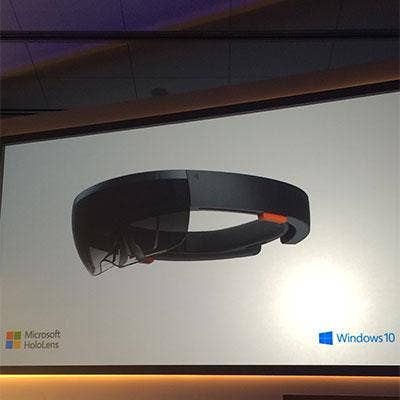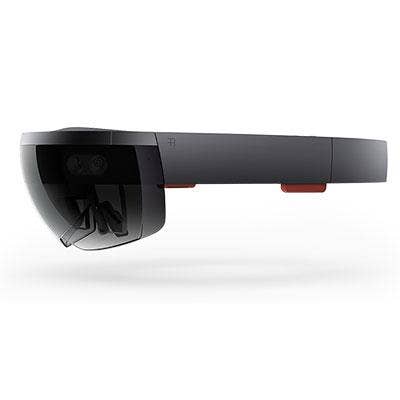5 Reasons HoloLens Won't Be The Next Google Glass

Through The Looking Glass
Industry specialists bubbled with excitement after Microsoft unveiled HoloLens, a holographic, headset-based computer, during its Windows 10 launch. But skeptics pointed to physical similarities between HoloLens and Google Glass, a Google-produced headset that was recently pulled off the market as the company reworks a new Glass product.
While analyst Patrick Moorhead, president and principal Analyst of Moor Insights & Strategy, a tech analyst firm based in Austin, Texas, acknowledged these similarities, he pointed to marked differences between how Google and Microsoft are handling the headset products.
"It's too early to tell if HoloLens will be successful, but what I like is Microsoft's approach to the product," he said.
CRN looked at five different decisions Microsoft is making that may put HoloLens on a different road from Google Glass.

5. Separate Target Audiences
HoloLens's primary target audience encompasses business users, as well as a smaller audience of enthusiast consumers, said Charles King, of market research firm Pund-IT. Google, on the other hand, tried unsuccessfully to gain mass consumer appeal for its Glass product.
This move may have been a mistake, because some high-technology products don’t yet appeal to the masses, he said: "Glass was a mystery to most people. The product was used by techies with a lot of disposable income."
The headset's target audience is the key to success because only a very narrow consumer base is interested in its functions, added King.

4. Differing Compositions
HoloLens does not need a connection to a PC or mobile device to function properly, said Alex Kipman, technical fellow in Microsoft's Operating Systems Group, during the Windows 10 launch. This factor separates the wearable from other headsets such as Google Glass and the Oculus Rift.
"I think Microsoft has a much better chance of getting traction with the product as it’s an extension of their 'one platform' initiative," said David Felton, founder of Norwalk, Conn.-based Microsoft partner Canaan Technology.
The headset is powered by processors managing the numerous sensors flooding through the device, such as central processing (CPU) and graphics processing (GPU) units, but also a Microsoft-developed holographic processing unit (HPU). These additions play into the virtual reality space, which Google Glass only dabbled in.

3. Concerns About Privacy And Social Stigma
Google Glass carried with it a social stigma burden, particularly in its invisible camera function, which proved to be a Google public relations nightmare, said Moor Insights & Strategy's Moorhead.
"There's a certain kind of trust and social norms that products need to reflect and I think Glass lacked these," said Moorhead.
The device contains a camera and microphone, causing concerns that users could record anything -- or anyone -- without their knowledge, added Pund-IT's King.
"People caused a lot of disturbances when they went into public areas and restaurants wearing Glass in record mode," King said. "If you're taking a new technology out to the market, it's important for vendors to make their products as accessible, affordable, and consumer-friendly as possible. It's best to approach products from the standpoint of the market."

2. Different Headset Functions
Google Glass' functions surrounded its targeted audience -- it worked as a way to freely access data without the user needing to look at a handheld device. This includes browsing the Internet, obtaining directions, sending texts and taking pictures.
HoloLens, on the other hand, serves as a display of augmented reality to users. This function enhances business-related duties, like collaboration and productivity improvements, and customer experiences in the retail setting.
In another interesting development, Microsoft is working with NASA's Jet Propulsion Lab to develop a HoloLens-enabled software called OnSight that can help NASA scientists explore Mars.

1. How Microsoft Carries Out The Launch
Google Glass' launch enveloped the product in mystery and played into the headset's struggles on the market, said Pund-IT's King.
"The rollout and public acceptance of Glass has been so fraught that Google has gone back to the drawing board under the management of a new executive and they're looking to relaunch it," he said.
In terms of the success of Microsoft's HoloLens launch, "it's something worth keeping a close eye on," he said. No price or release date was set to the new glasses during Wednesday's event.
"Microsoft seems to understand … how important the launch of Windows 10 is to health of their company," said King. "They're trying to set the right tone with launch, so I expect them to be just as mindful and careful with this new product."